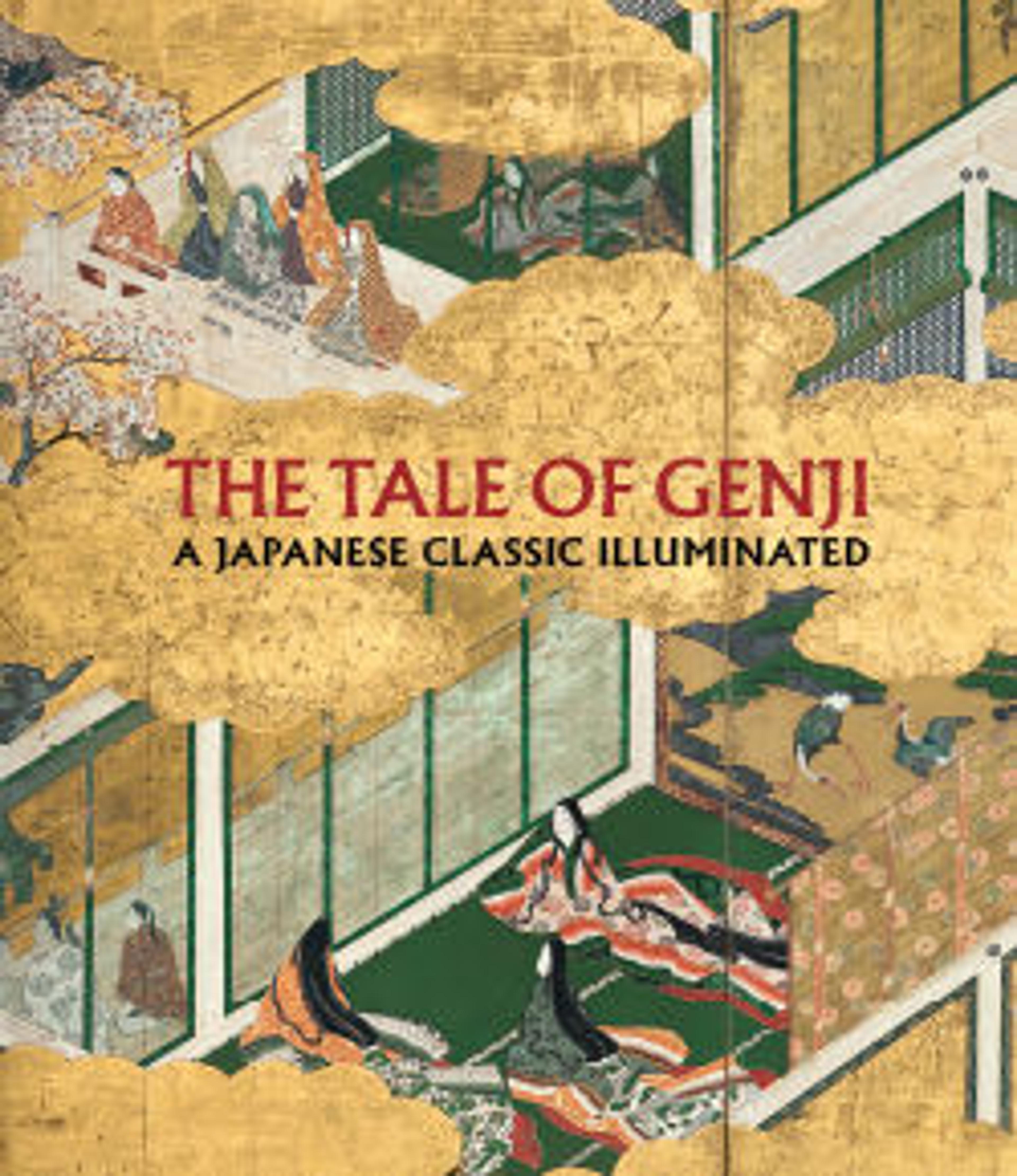“The Oak Tree”
This scene from Chapter 36 of The Tale of Genji shows Tō no Chūjō conferring with an ascetic summoned to heal his ailing son, Kashiwagi, lying in the adjacent room. Unbeknownst to them, Kashiwagi’s illness derives from remorse over his illicit affair with Genji’s wife, the Third Princess. This delicate image bears hallmarks of works by Tosa Mitsuyoshi. Many of the small-scale Genji paintings from the Muromachi period (1392–1573) through the early Edo period (1615–1868) were executed by painters of the hereditary Tosa school, who monopolized the court-sanctioned position of painting bureau director. In the late sixteenth century, Tosa artists transformed Genji pictures from intimate paintings to large-scale works. In the Momoyama period, maki-e artists also used Tosa and Kano paintings to draw inspiration for their compositions depicted on export lacquers.
Artwork Details
- 土佐光吉筆 源氏物語図色紙 「柏木」
- Title:“The Oak Tree”
- Artist:Tosa Mitsuyoshi (Japanese, 1539–1613)
- Period:Momoyama period (1573–1615)
- Date:late 16th–early 17th century
- Culture:Japan
- Medium:Album leaf mounted as a hanging scroll; ink, color and gold on paper
- Dimensions:Image: 9 3/4 × 8 3/16 in. (24.7 × 20.8 cm)
Overall with mounting: 54 5/16 × 15 1/2 in. (138 × 39.4 cm)
Overall with knobs: 54 5/16 × 17 1/4 in. (138 × 43.8 cm) - Classification:Paintings
- Credit Line:Mary Griggs Burke Collection, Gift of the Mary and Jackson Burke Foundation, 2015
- Object Number:2015.300.31
- Curatorial Department: Asian Art
More Artwork
Research Resources
The Met provides unparalleled resources for research and welcomes an international community of students and scholars. The Met's Open Access API is where creators and researchers can connect to the The Met collection. Open Access data and public domain images are available for unrestricted commercial and noncommercial use without permission or fee.
To request images under copyright and other restrictions, please use this Image Request form.
Feedback
We continue to research and examine historical and cultural context for objects in The Met collection. If you have comments or questions about this object record, please contact us using the form below. The Museum looks forward to receiving your comments.
